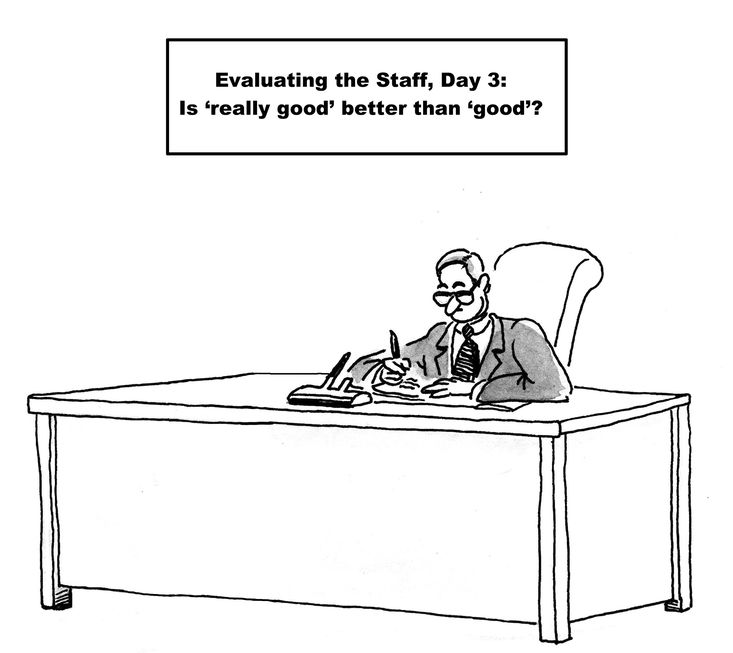How to Make Employee Performance Reviews More Efficient & Effective
Here are some helpful tips that can guide you to more effective employee performance reviews.
And while this is written for the supervisor, it contains valuable information on how employees can create their own performance reviews.All of this can be used for self-analysis to improve performance and job satisfaction. Even supervisors benefit from doing their own reviews!
The Beginning of the Year: A Great Time to Set Goals & Expectations
Ahh, new beginnings and fresh starts. For those that have not done a year-end employee performance review, the beginning of the year is a great time to meet with your employees to discuss what your goals are for them for the next 12 months. But to dive a bit deeper into what you expect from each of them, now is also the time to meet with them individually to help set their own performance goals.
By setting up goals and expectations at the beginning of the year, it creates clarity and accountability. There is no questioning what is expected of them and when. This provides a clear outline of sorts for both they and you to follow over the next year, and to measure against each time you discuss performance over the coming months.
Often the best method for setting up goals is the tried-and-true, SMART method. SMART stands for Specific, Measurable, Achievable, Results-oriented, and Time-bound. It is important when setting up these goals to remember that not only should they discuss how the employee’s goals align with their role, but also how they contribute to the organization.
After each meeting don’t forget to type up the employee’s individual goals as well as the company’s. Email them to your employee, so that you may both have the same roadmap from which to direct yourselves.
Monthly or Once a Quarter: Hold Meetings for Feedback
Though many managers stress a lot about how to bring up certain things regarding employees performance during their reviews, this information that you are sharing with them should be nothing new. By allowing them feedback all year, you give them the opportunity to change certain things that you find are not working, and to enforce and encourage them to do more of what is successful. This way you are not blindsiding them with information that they would have taken to improve upon the issue. These meetings simply reinforce desired behavior.
If you find that your schedule fills up quickly, as many of ours do, decide on how often you would like to meet (monthly, bi-monthly, quarterly and schedule them ahead of time. This way they are not forgotten about or seen as of lower importance.
Prior to every meeting, it would be wise to prepare an agenda, which should serve to review the employee’s goals and expectations that you outlined in January. Additionally, these meetings are a good time to ask any other assignment-based or quarterly metrics questions.
Now is also the time to share some informal feedback with them regarding performance, and to ask them for their own thoughts as well. A good method for doing so is to share with them behaviors that you believe they should start, stop, or continue.
After the meeting put together notes as to what was discussed. This will prove extremely beneficial when the end of the year rolls around and you need to remember what had been discussed months earlier.
Ask Your Employees to Prepare Their Results
It is important that you ask your employees to prepare their own results and performance review. A good idea may be to provide them with an official company form, which asks them to summarize things such as key responsibilities, current work, and overview of the year’s goals and results.
Have each employee write a self-evaluation prior to your meeting with him or her. This allows for the employee to have a say in their performance and forces them to take an honest look at their work and their results. Often times this can actually take some of the difficulty of the discussion off of you alone. Good self-evaluations include questions such as:
- What achievements are you most proud of this year?
- Where have you fallen short of the team’s expectations?
- Where have you fallen short of your own expectations?
- Where could you improve?
- How will you improve?
- What can your manager do to help you succeed?
Ensure that YOU Are Prepared
Not only should you have your employee prepare for the meeting, but you should also ensure that you are prepared as well. Review your notes as well as any additional measures of performance (e.g. sales reports, call records, etc.). It may also be helpful to include feedback from other employees and clients in addition to your own observations.
While you are reviewing the results of your employee’s efforts, you should also be sure to ask yourself several other questions regarding this person. Are they meeting his or her goals? What about your expectations? How would the company view the success of this individual? If he or she is not meeting these goals and expectations, is there a way that you can help to change that? If there is such a way, are there rewards or other acknowledgments that may help to incentivize that employee? One such incentive is a bonus.
Bonuses are pay compensations that go above the amount of pay that an employee receives by way of salary or hourly rate. While some opportunities for bonus pay may be quite clear via a union contract, employers also have the opportunity to provide such bonus pay randomly or can do so in accordance with a pre-existing contract. Bonuses are a good method for employers to thank their employees and to congratulate them on their successes.
Prepare Your Documentation
About one month prior to the review, it is time to collect all external feedback, relevant data, and self-assessments to create an effective performance evaluation review. This information is then used to prepare evaluation forms and written letters regarding feedback. These materials can also be used to set up a list of talking points for when you sit down face-to-face for your discussion.
It is important when planning these reviews, to have a format for the review that will make sense to the both of you. It should not only be comprehensive in nature, but should allow for your employee to clearly follow along. One such example would be to set up the review around the initial goals that you had set together at the beginning of the year. You may choose to go through the list one by one or may prefer to discuss the employee’s major projects and their accompanying relevant goals as you go.
One of the most important aspects of employee performance reviews is to identify areas of affirmation and encouragement, as well as areas for improvement or growth. Then select a couple of examples for each. You can develop talking points around these examples from your own observation as well as the data that has been collected. Then it makes sense to come up with future expectations and action items that are related to each goal. It is equally important to provide praise and point out areas for improvement, as you want the employee to leave feeling that they matter, but providing them with constructive information to continue to grow.
Once you have prepared with all of the above-mentioned resources, it is time to have those discussions with each team member.
The In-Person Effective Employee Performance Review
This is often the most challenging part of the review: actually sitting down with the employee face-to-face. However, it is equally as important to do. Here are a few things to remember when you are about to undertake the big talk.
-
Think of yourself as a coach, rather than as an evaluator.
It is important for your employee to understand and to feel that you are on his or her side. By changing your mindset you can help to do so. You are there to help them improve their performance.
-
Stop and truly listen to your team member and what they have to say.
Remember that this is a two-way conversation. Don’t just listen to be polite, listen to learn. Ensure that you are conducting yourself with some emotional intelligence, don’t be defensive, ask questions, and learn to be comfortable with being uncomfortable. No one said that these conversations were supposed to be easy.
-
Choose your words carefully.
Remember that your words are powerful. That’s why it is so important to be thoughtful about what you plan to say to someone else especially someone you want to motivate to continuously improve. As such, play on their good performance, be specific, and constructive. Focus on problem-solving, use powerful action words and, measurement-oriented, specific language. Most importantly, remain positive.
-
Be transparent.
However it is that you are measuring your employees, be sure to be straightforward and clear with them about the process, where they stand, and how the company perceives their contributions. Transparency helps to build trust.
-
Provide context.
When giving feedback, it is extremely important to be very specific and provide examples in the context of their work. Being vague can create confusion and resentment, while using generalizations always or never can raise someone’s defenses. Also ensure that you explain the impact of the employee’s performance on the team’s overall performance, the team itself, and the company. This allows them a more thorough understanding of how their performance affects different things.
-
Keep your biases in check.
It’s very important is to keep your own biases in mind; we all have them! Some include recency bias (the most recent behavior comes to mind), similarity bias (a manager relates to an employee and therefore shows them greater affinity), halo bias (an individual is rated high overall because he or she does one thing really well), and horn bias (an employee is rated poorly because of just one thing he or she does not do well).
-
Own your feedback.
Don’t just stand behind the feedback of others – have your own feedback and don’t be afraid to really share it. Don’t be dismissive of any of the feedback, as it all has its own importance and doing so can send mixed messages as to its legitimacy and importance.
- Schedule your follow-up conversation.
You may be really excited to have completed the often-perceived difficult task of conducting a performance review, but it is extremely important to know that the discussion cannot and should not end there. Employee performance stands a tough chance of improving if it is only discussed once per year. Instead, it may be a good idea to set up the next meeting after the New Year (to start the process over anyway), and to set the tone that lets them know that the next conversation will continue to discuss how you can help them to improve.
By making your employee performance reviews a truly yearlong assessment, it eliminates surprises, creates expectations and accountability, and will serve to spur on true change. By showing your team respect and working with them instead of against them, they’ll be just as eager to improve. It is possible to conduct truly effective employee performance review.

